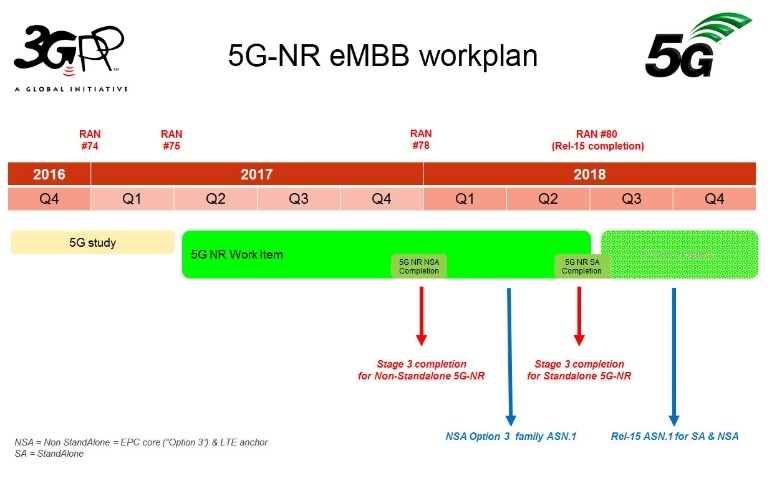about 5G india forum
The mobile platform is already the biggest technology platform in
history, and has already overtaken PC and mobile computing is expanding
beyond the smartphone applications. 5G could make it bigger to further
transform societies and industries. This technology evolution is
expected to enable new services, connect new industries and devices, and
empower new user experiences, to support expanded connectivity needs for
the next decade and beyond. It is envisioned that a national program
built around the evolution of this technology will help India address
the digital divide in a timeline that meets the aspirations of the
government.
Adoption of 5G will require substantial investment in more downstream
innovation than previous generations of communications systems. New
business ecosystems are expected to emerge in which a multiplicity of
players will meet, compete and work together. This will open
opportunities to start-ups and smaller ecosystem players, which will
eventually profit from the innovation capabilities offered by networks
providing open interfaces to develop network "apps" and services.
Thus, the 5G India Forum will serve as a strategic national initiative
which concerns all stakeholders, private and public, small and large, to
meet the challenge of making 5G a reality in India, at timelines
aligning with the rest of world.
5G India Forum is a collaborative body under the aegis of COAI.
Recent trends have shown that dependency on data is increasing
very fast. Even in a country like India which is supposed to be
voice centric, there is immense growth in data consumption. This
can be seen with the shifting of focus of telecom service
providers from voice-centric networks to data-centric networks.
The battle between operators is now over the user experience in
urban environments with high traffic volumes per square km.
Mobile data has also tangibly benefited the society in the field
of health, education banking, etc. The wireless communication
services are expected to expand into new market segments to
facilitate the digital economy, e.g. smart grid, e-health,
intelligent transport systems, traffic control, agriculture,
retail, trade and tourism which would bring requirements beyond
what can be addressed in today’s 3G/4G connected environment. To
meet these new challenges, there is a need to understand these
requirements with respect to Indian consumer perspective and
create and support standards which enable implementation of
these next generation services. This needs to create a new
generation of network systems and radio technology which could
deliver extreme broadband, ultra-robust, low latency
connectivity and massive machine to machine networking and
create a seamless platform for Internet of Things (IoT). It is
expected that next generation technology (5G) will handle vast
variations in different use cases. However, different use cases
will have different spectrum requirements in terms of frequency,
coverage, bandwidth, etc.
5G is not only about handling existing systems more efficiently
but also cater for new possibilities and use cases many of which
are yet not known. It is envisaged that 5G will be catering for
the scalability and adaptability across extreme variations in
consumer requirements. New demands for new businesses and
industries will create diverse requirements and will therefore,
lead to a newer architecture. Some other factors to categorize
services can be as follows –
- Performance critical – very high peak data rates providing unlimited experience
- Capacity critical – to accommodate and manage huge number of concurrent connections
- Time critical – very low (<1 ms) radio latency
- Mobility critical – very high speed mobile systems (> 100 kmph)
- Cost critical – very low cost for massive deployment
- Energy critical – devices requiring large battery life (>10 years)
- Coverage critical – to cover large distances or deep in-building coverage

5G needs to support and unify all that have been added to 4G;
like LTE Broadcast, device to device discovery, unlicensed
spectrum, but also provide significant improvements over 4G. The
continued 4G LTE evolution will take advantage of new spectrum
opportunities below 6GHz that are becoming available before
2020. 5G will also take advantage of new spectrum opportunities
that will become available beyond 2020, including 2G/3G
re-farming and new spectrum above 6GHz like mm Wave. To support
the expanded connectivity needs for the next decade, 5G should
be much more than higher data rates and the addition of new
spectrum.
To meet this vision, 5G needs the scalability across extreme
variation of use cases; such as uniform fiber-like broadband
everywhere—not just higher peak data rates, to new services like
ultra-reliable mission critical applications to remotely control
for example critical infrastructure or vehicles, and connect
everything from simple battery powered sensors to complex
robots. 5G needs to aim for a truly edgeless connectivity where
devices are no longer just endpoints and a unified air interface
for all spectrum and services. This will create unified platform
designed for expanded connectivity in the next decade and beyond
with improved cost and energy efficiency. So, 5G is not just a
new generation, but a new kind of network, anticipated around
2020, that will transform the role of wireless.
The 5G technology should be scalable to extreme variation, so
that today’s and tomorrow’s use cases can be serviced. The
technology need to be supporting use cases such as:
- New form factors, wearables and massive proliferation of sensors and machine to machine type communication, or human to machine communication.
- Sensing what is around for new services and experiences, autonomous vehicles, with connectivity for example for collision avoidance.
- Smart homes/buildings/cities that require various connectivity needs, from high definition surveillance video to simply connecting parking meters.
- Control of critical infrastructure such as the electric grid, and industrial process automation
- Remote control of vehicles, such as cars, drones and other flying vehicles.
- Health services, emergency response and remote control of critical medical procedures where failure is not an option.
- Extreme mobile broadband both indoor and outdoor that no longer makes the distinction between fixed and wireless access meaningful.
5G is much more than higher peak rates and wider spectrum, it needs the scalability to address an extreme variation in use case and devices, that roughly spans the following service types:
- Massive number of connected things
- Enhanced mobile broadband
- Mission critical services, and
- Proximal and aware services
Defining 5G Vision, Technology and Roadmap
India has traditionally been a consumer of technology, but
played a larger role in developing and delivering services to
the world. We should leverage on this fact and work towards
building India as an empowered society, building and developing
solutions for itself and the world to consume. Several policy
instruments by the Government of India like Make in India,
Digital India, etc. act as a vehicle to achieve this goal.
The mobile platform is already the biggest technology platform
in history. Government of India has played a larger role helping
in the proliferation of mobile broadband, and India leads the
world with the mobile customers exceeding the fixed line
customers. 5G could make this bigger to further transform
societies and industries, with the right policy instruments in
place.
Timeline of events on 5G
COAI is a market representation partner of 3GPP, a world leader in the standardization of cellular technologies. As per their recent schedule (see graphic below), the group agreed to have an intermediate milestone for the early completion of the Non-standalone (NSA) 5G NR (Next Generation Radios) mode for the enhanced Mobile Broadband (eMBB) use-case by Dec 2017. In Non-standalone mode, the connection is anchored in LTE while 5G NR carriers are used to boost data-rates and reduce latency. This paves way for industry to start building trail platforms (aka, prototypes) and do operator trials in 2Q 2018, and commercial launch in 2019.

- 5G India Forum shall be a collaborative body under the aegis of COAI.
- 5G India Forum will work through various Committees including:
- The 5G India Forum Membership will be Free of Cost and will be based on Approval.
5G Spectrum Committee
5G Equipment & Devices Committee
5G Policy and Regulatory Committee
This forum aims to become the leading force in the development of next generation communications and will enable synergizing national efforts and will play a significant role in shaping the strategic, commercial and regulatory development of the 5G ecosystem in India.
Terms of reference
- Develop national policy on 5G along with DoT
- Develop consensus within India on 5G systems / infrastructures / services, and prepare a vision document on priority.
- Identify vertical application domains which would benefit from 5G and associated challenges.
- Identify the societal, economic, environmental, business and technological benefits obtainable by an early adoption of 5G.
- Collect and evaluate publicly available visions and major technical trends from industry, research community and available information from other regions.
- Identify commonalities, bottlenecks and differences in visions and technical trends.
- Prepare input documents for facilitating dialogues on standardization, technology development, spectrum availability and international engagements.
- Support the creation of a venture like program to encourage eco-system players develop 5G services.
- Collaborate with various international forums working on 5G.
Future roadmap –5G by Mr. Ajay Manghat, Vodafone India
download3GPP 5G System Architecture - Overview and Roadmap by Mr. Puneet Jain, Intel Corporation
download5G in India – Operators Perspectives by Mr. P.K. Bhatnagar, Reliance Jio Infocomm Limited
downloadNR: 3GPP’s answer to 5G radio requirements by Mr. Valentin Gheorghiu, Qualcomm
downloadCatalysing 5G Launch in India by Mr. Abhay Savargaonkar, Bharti Airtel Limited
download3GPP 5G Standardization-Harmonized Outcomes & Global Appeal by Mr. Asbjorn Grovlen, Ericsson.
download
Transforming to Digital Service Provider by Dr. Ulrich Dropmann, Nokia Bell Labs
Mar 2, 2018downloadThe 5GIF is one of the independent evaluation groups registered with ITU-R for IMT2020 candidate radio technology evaluation. This group was formed to evaluate the IMT2020 candidates from the perspective of Indian network deployments. This is a group of operators, OEM’s, universities and individual experts participating in a collaborative manner, in the evaluation of candidate IMT2020 technologies of interest. This is a contribution driven activity, with decisions made through a consensus seeking approach.
| Meeting | Dates |
|---|---|
| Kickoff meeting | Mar 2019 |
| Workshop #1 | April 2019 |
| Workshop #2 | Aug 2019 |
| Workshop #3 | Sep 8-10, 2019 |
| Workshop #4 | Nov 10, 2019 |
5GIF IEG contributions to ITU-R WP5D
5GIF IEG Final report 5GIF IEG Final report
IEG Interim report to WP5D#33 5GIF Interim evaluation results towards IMT-2020 Candidate (3GPP RIT)
5GIF IEG Interim presentation to WP5D#33 5GIF IEG Interim Report WP5D33
Resources
Link to the ITU-R WP5D IMT-2020 submission and evaluation process
The 5GIF Evaluation Group ( 5gif.github.io )
Contact
Vikram Tiwathia Telephone: +91 11 2334 9275Email :imt2020@5gindiaforum.in
5G Spectrum Considerations
downloadAn Overview of 4G Rollouts & Future Roadmap for 4.5G & 5G Technology in India till 2020 – April 12, 2017
Apr 12, 2017download5G Ecosystem Updates by Mr. Stuart Cooke from Global Mobile Suppliers Association (GSA)
Jan 22, 2020downloadUpdates on WRC-19 & Proposed Next Steps by Mr. Hakan Ohlsen from Global Mobile Suppliers Association (GSA)
Jan 22, 2020downloadPlease contact us at contact@5gindiaforum.in
